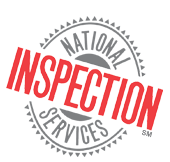Asbestos: This thermal insulation material is typically found on heating system components, wall and ceiling materials, floor coverings and certain adhesive materials. Removal is complicated due to regulatory compliance factors and is always costly. Inspections can determine presence (or absence), identify types, quantities and conditions.
PCB’S: Polychlorinated bi-phenyls, liquid insulating material previously used in electrical transformers. Highly toxic and difficult to remove, transport and dispose of. A serious environmental threat due to high potential of leaking since most transformers are located in outdoor areas. Inspection simple and inexpensive.
Radon Gas: An invisible, cancer causing, radioactive gas which is produced as radioactive elements decompose in the ground. This gas is everywhere, and simple testing using sensitive alpha-detection equipment can determine concentration within 24 hours.
Soil Contamination: Drilled sampling and laboratory analysis can identify presence (or absence) of soil contamination due to disposal activities, whether household, human, industrial, landfill or accidental. Run-off from agriculture, mining, oil and gas activities, underground tanks and natural pollutants can be identified, and environmental reports generated with analysis of situations and proposed remedies.
Lead Based Paints: Simple testing can be identify the location, conditions and appropriate remedial action for toxic concentrations of lead based paint. New legislation may make this hazard the next “household buzz word”.
Electromagnetic Fields: The Environmental Protection Agency has determined that high powered electrical transmission lines are capable of causing leukemia and brain cancer. Simple testing can identify the intensity of this hazard and degree of risk to human health.
